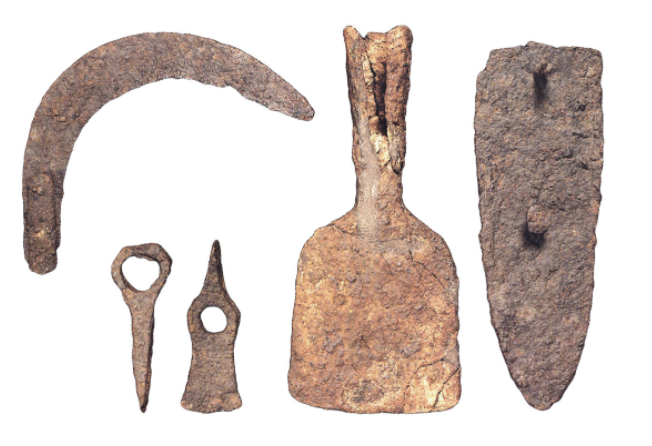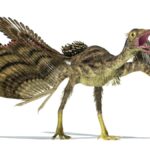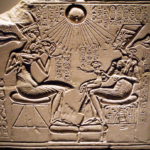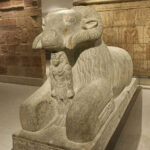“In a series of forms graduating insensibly from some apelike creature to man as he now exists, it would be impossible to fix on any definite point where the term ‘man’ ought to be used.”
(Charles Darwin, ‘The Descent of Manes’)
One of the crucial points highlighted by the Prime Minister of India in his Independence Day address to the nation this year related population control. After a pretty long interval, the issue of overpopulation seems to be back on the agenda of the government. It is a welcome move considering that a runaway population has become a huge drag on the nation’s progress.

Population explosion is a rather recent phenomenon. We do not know exactly when or where animals that came to be classified by biologists as Homo sapiens first evolved from archaic humans that appeared on our planet some 2.5 million years ago in East Africa. What most scientists agree is that around 150,000 years ago, East Africa was populated by Sapiens that looked more or less like modern humans. For the next 140 millennia or so, Homo sapiens had lived a nomadic life, hunting games, digging out roots and gathering fruits and nuts. And all through this long period of their earthly existence as hunter-gatherers (foragers), their population remained quite small. With only hunting and foraging to support human populations, it is estimated that the Earth could only support about 10 million people. Then some 10,000 years ago, the population of Homo sapiens started to soar. Again, some 200 years ago, the growth of world population shifted to the top gear. Both these shifts in the population growth were associated with ‘Revolutions’. The first one was the Agricultural Revolution and the second the Industrial Revolution. This post seeks to discuss only the first shift – the Agricultural Revolution – and how it sparked off the first ever population explosion in the history of humankind.
Historians estimate the world population was around six to ten million 10,000 years ago, at the dawn of agriculture. That was after Homo sapiens had inhabited the earth for roughly 140,000 years. But, over the next 8,000-year period up to 1 CE, world population grew to some 500 million (Population estimates of early historical periods are imprecise. They range from 200 to 600 million). Now, how did the forager transforming himself into a farmer caused such a sudden spike in the population growth? In order to understand it, we have to take a peep into the world before agriculture.
The Pre-agricultural Age
About 13.5 billion years ago matter, energy and space came into existence as a consequence of what has come to be called the ‘Bing Bang’. (To know more about Big Bang, please refer to my post, ‘Who Created the Universe‘. It caused the formation of planet Earth some 4.5 billion years ago. About 3.8 billion years ago, certain molecules combined to form particularly large and intricate structures called organisms. These organisms evolved through millions of years into a plethora of animal species. Thus, some 2.5 million years ago, a species of animals that looked much like modern day human beings appeared in the heartlands of East Africa. However, for innumerable generations, these archaic humans did not stand out from the rest of the animal species with which they shared their habitat. They played, loved, made friends and competed for status and power. But even chimpanzees, baboons and elephants did all these.
Now, what are species? Species is a classification conceived by Biologists. Animals are said to belong to the same species if they mate with each other to produce fertile offspring. Species that evolved from a common ancestor are bunched together under the heading ‘genus’ (plural: genera). Lions, tigers, leopards and jaguars belong to different species. But all these animals belong to the same genus – Panthera. Biologists label organisms with a two-part Latin name – the first part represents the genus and the second the species. Thus, the biological name of Lion is Panthera Leo – genus: Panthera and species: Leo. Biologists gave human beings the name, Homo sapiens – genus Homo (Man) and species sapiens (Wise).
Genera are grouped into families. All members of a family trace their lineage to a founding matriarch or patriarch. For example, all cats, starting from the smallest house kitten to the ferocious lion, share a common feline ancestor that lived around 25 million years ago (Family: Felidae). Similarly, Homo sapiens too are members of a family – a family known as the ‘Great Apes’ (Hominidae). Chimpanzees, gorillas and orang-utans are our family members – chimpanzees being the closest. Some six million years ago a single female ape had two daughters. One became the ancestor of all chimpanzees. And the other, you guessed right, was our own ancient grandmother!
Humans evolved first in East Africa some 2.5 million years ago from an earlier genus of apes called Australopithecus (meaning: Southern Ape). Some half a million years later, these archaic men and women left their homeland to travel through and settle in vast areas of North Africa, Europe and Asia. Since survival in the snowy forests of northern Europe called for different traits compared to living in the steaming forest of Indonesia, the human population evolved into several distinct human species. Humans in Europe and Western Asia evolved into Homo neanderthalensis (Man from the Neander Valley), known popularly as Neanderthals. The more eastern regions of Asia were populated by Homo erectus (Upright Man). On the Island of Java, Indonesia, lived Homo Soloensis (Man from the Solo Valley).
The humans who stayed put in East Africa too continued to evolve to produce new human species, Homo redolfensis (Man from Rudolf), Homo ergaster (Working Man) end eventually Homo sapiens (Wise Man). These species were different in their physical appearance and activities. But all of them belonged to the genus Homo and hence human beings. Thus, from about two million years ago until around 30,000 years ago, the earth was home simultaneously to at least six different human species. Today, all human species barring Homo sapiens have become extinct.
In the pre-agricultural world, the vast majority of people lived in small bands numbering at most a few hundred individuals. Some evolutionary psychologists argue that foragers lived in communes devoid of private property, monogamous relationships and even fatherhood. In such a band, a woman could have sex with several men (and vice versa). Since no man knew for sure whose child is born to a woman, all the adults of the band cooperated in parenting the children. The proponents of this ‘ancient commune theory’ argue that the frequent infidelities that characterize modern societies and the high rates of divorces and the plethora of psychological complexes from which both children and adults suffer are all the consequences of forcing humans to live in nuclear families and monogamous relationships that are incompatible with our biological software. Of course, many experts disagree.
The typical peasant in traditional China ate rice for breakfast, rice for lunch and rice for dinner. By contrast, the peasant’s ancient forager ancestor might have eaten berries and mushroom for breakfast, fruits, snails and turtles for lunch and rabbit steak with wild onions for dinner. The next day, he might have enjoyed an altogether different menu. No adulteration and no traces of chemicals – totally organic stuff! That was luxury humans would never enjoy! The wholesome and varied diet, the relatively short working week, and the rarity of infectious diseases have led many experts to define pre-agricultural societies as ‘the original affluent society’. And since they lived hand to mouth lives, they seldom worried about tomorrow or suffered from indigestion or anxiety neurosis.
Nevertheless, it would be a mistake to romanticize the lives of those ancient forager bands. They lived in a world that was harsh and unforgiving. Periods of want and hardships were not uncommon. Average life expectancy was thirty to forty years and the primary reason for it was high incidence of child mortality. Accidents were mostly death sentences. The foraging bands were always on the move and people who became an impediment to movements became the casualty. Aged and disabled members of the band were often abandoned or eliminated; unwanted babies and children might be slain.
Now, how did forager life affect the growth of human population? Homo sapiens reached the Middle East around 70,000 years ago. For the next 50,000 years, our ancient ancestors flourished there without becoming farmers and herders. In times of plenty, people had a few more children and in times of scarcity a few less. Humans have hormonal and genetic mechanisms that help control procreation. In good times, females reach puberty earlier providing higher chances of getting pregnant. In hard times, puberty occurs late and fertility decreases. Babies and small children, who move slowly and demand much care, were a burden on nomadic foragers. A woman would not be able to carry three children below the age of four. So, people tried to space their children. Women did so by nursing their children around the clock and until a late age, which significantly reduces the chances of getting pregnant. Other methods included full or partial sexual abstinence (perhaps, backed by cultural taboos), abortions and infanticides. Thus, population growth stayed minimal all through the long millennia during which humans fed themselves by gathering plants and hunting animals. Even after Homo sapiens spread from South Africa to the Middle East, Europe and Asia and finally to Australia and America, they continued to live as foragers and their population remained limited.
The Agricultural Revolution
The situation changed drastically when some 10,000 years ago, Sapiens started to invest all their time and effort to manipulate the lives of a few animal and plant species. From sunrise to sunset, humans sowed seeds, watered plants, plucked weeds from the ground and led sheep to prime pastures. The humans were starting a revolution – the Agricultural Revolution. Most of us believe that Agricultural Revolution was a great leap for humanity. With the domestication of agriculture, people abandoned what they thought as the tedious life of hunter-gatherer. They started settling down to enjoy the pleasant and fulfilling life of the peasant. The Agricultural Revolution certainly helped in enlarging the sum total of the food available to humankind. But the extra quantity of food did not translate into a better diet, improved health or more leisure. It actually translated into poor health and population explosion.
While the farmer believed he was domesticating a handful of plant and animal species, the truth was that these plants and animals were domesticating the farmer. Let us take the example of domestication of wheat. Ten thousand years ago wheat was just another weed confined to a small range in the Middle East. Wheat might have been an insignificant item that added variety to the forager menu. But within a few millennia after humans learnt the art of cultivating wheat, the peasants in many parts of the world were working from dawn to dusk in order to take care of their wheat plants. Wheat did not like rocks and pebbles and Sapiens broke their backs clearing fields. Wheat hated sharing space, water and nutrients with other plants. So men and women laboured long days in scorching sun, weeding their wheat fields. Wheat got sick easily and the peasant had to watch out for worms and blights. Wheat was susceptible to attack by rabbits and locusts. So farmer built fences and protective nets, and stood guard over his fields. Wheat was thirsty, so farmers had to dig irrigation canals or carry loads of water from far away water sources.
The move from foraging to farming took place gradually. Yet, the change occurred too fast for the evolutionary process to transform humans to fit the farming role he sought to take. The consequence was that humans ended up with the mental set up of hunter-gatherers and the food menu of ancient farmers. Homo sapiens were adapted to climbing apple trees and chasing gazelles and not tilling land or herding sheep. Studies of ancient skeletons indicate that the transition to agriculture brought about a plethora of ailment such as slipped discs, arthritis and hernias. Moreover, the new agricultural tasks demanded so much of time that people were forced settle down permanently next to their farms. Thus, instead of man domesticating wheat, wheat domesticated man. The word domesticate comes from the Latin word ‘domus’ meaning house. And it was certainly not wheat that was domesticated.
Wheat offered nothing to the people at the level of individuals. But it did bestow something on Homo sapiens as a species. Cultivating wheat provided much more food per unit of territory and thereby enabled Homo sapiens to multiply exponentially. Around 13,000 BCE when humans were foragers, the area around the oasis of Jericho in Palestine could sustain at most one roaming band of one hundred people. Around 8500 BCE, when wild plants gave way to wheat fields, the oasis supported a large and cramped village of one thousand people, who suffered far more from sickness and malnutrition.
In the aftermath of Agricultural Revolution, population started growing at a pace unknown in human history thus far. Just as the economic success of a company is measured essentially by the number of dollars in its bank account, and not on the happiness or contentment of its employees, the evolutionary success of species is measured by the production of the number of copies of its DNA. When copies of DNA cease to exist, the species become extinct just as a company goes bankrupt, when there are no more dollars left in its bank account. From such a perspective 1000 copies is far better than 100 copies. Agricultural Revolution offered the ability to keep more people alive, although the conditions under which they live keep deteriorating. This is more or less true even in the 21st century.
How did the hunter-gatherer come to take up farming. About 10,000 to 15,000 years ago, the last glacial period (Ice Age) gave way to a period of global warming. As temperatures rose, rainfall increased. The resultant climate was ideal for Middle Eastern wheat and other cereals. As people started eating more wheat, they inadvertently spread its growth. Since wheat had to be winnowed, ground and cooked before eating, people started carrying wheat for processing to their campsites. And some of these grains fell on the way sides. Over time more and more wheat started growing alongside the human trails and close to the campsites. When humans burned down forests, it helped the spread of wheat since it helped extend wheat cultivation to areas that were once forests.
As the area under cultivation increased, humans started settling permanently close to their farms. As agriculture increased food supply, the population started growing more rapidly. It became easier for women to give birth more frequently. Babies were weaned early to be fed on porridge and gruel. Since extra hands were required to work the fields, people happily produced more and more children. Food production increased, so also the number of mouths to be fed. As people began living in crowded and disease-ridden settlements, as children fed more on cereals and less on breast-milk and as each child competed for his or her porridge with more and more siblings, child mortality soared. Yet the increase in births still outpaced the increase in deaths since humans kept producing more wheat and more children.
A series of improvements that were brought in to farming that was meant to make life easier for the peasant eventually ended up as millstones around his neck. Whenever the farmer opted to put in some extra labour, like hoeing the field rather the scattering the seeds on the surface of the soil, he reassured himself that the extra effort would produce better harvests that would ensure food security for the family. The logic was that if you worked harder you would enjoy better life. The peasant worked ever harder, but there was never any surplus left because the extra harvest had to be shared with a larger number of children. The peasant did not realize that feeding his children more porridge than breast-milk was damaging to their immune system or permanent settlements were hotbeds of infectious diseases.
Also, the peasant did not realize that protecting the surplus grains from thieves and enemies was a tedious and risky enterprise. Farming communities had to construct protective walls around their settlements and deploy armed guards to fight attackers. Finally, when humans realized how Agricultural Revolution had actually made their lives harder, they had already gone too far on the farming path. It was impossible to go back because of the huge burden of the small changes that have accumulated over the long millennia. People simply could not imagine a life separated from their corn fields and sheep herds. The luxury trap into which humans had fallen had simply snapped shut.
One of history’s few iron laws is that luxuries tend to become necessities and to spawn new obligations. Once people get used to a certain luxury, they take it for granted. Then they begin to count on it. Finally, they reach a point where they cannot live without it. For example, over the last few decades, we have invented countless time-saving devices that were supposed to make our lives more relaxed and enjoyable – washing machine, dishwasher, vacuum cleaner, telephone, smart phone, computer, Internet, email and so on. We thought that we would save time by using these devices. But what has been the reality? We have revved up the treadmill of life to ten times the former speed and made our days more anxious and agitated. Now, can we ever go back to the simplicity of rural lives?
Conclusion
Thousands of years ago, one band of hunter-gatherers somewhere in the Middle East or Central America, who had no belongings to slug around and no fixed place to live , decided to settle down and start tilling. Before long, agriculture became an irresistible passion for people. The farmers started converting forager territories into farmlands. Since farming created the conditions for swift demographic growth, farmers could easily overcome foragers who came into the territory they once roamed, by means of the sheer weight of numbers. Now, the forager had two options before him – abandon their hunting-gathering grounds and flee or pick up ploughshare and start tilling. Either way, the old life was doomed for the forager. And eventually, one by one the forager bands picked up the ploughshare. And that caused the Agricultural Revolution.
No one plotted the Agricultural Revolution or sought human dependence of cereal cultivation. A series of trivial decisions aimed mostly at filling a few more bellies and gaining a little more security in life had the cumulative effect of forcing ancient foragers to spend their days carrying water drums under scorching sun. As population increased, more area had to be brought under cultivation. As the extent of land under cultivation expanded, more hands became essential to work the fields. It was a vicious circle. And people broke their backs tilling more ground and making more babies!
——————————————————————————————————————–
Note: The inputs for this post comes mostly from the book, ‘Sapiens: A Brief History of Humankind’ by Yuval Noah Harari, author and professor of World History at the Hebrew University of Jerusalem.










